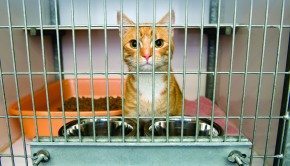Walking the Talk
Marlane Barnes Fosters Rescue Dogs
Actress Marlane Barnes recently made her feature film debut as Maggie of the Irish Coven, in The Twilight Saga: Breaking Dawn Part II, building on a growing résumé of films, TV and theater credits. A current resident of Los Angeles, she actively supports the nonprofit Best Friends Animal Society, a local no-kill facility, and serves as national spokesperson for Spay First. To date, her foster dogs include India, Birdie, Archie and Wally, with more to come.
Why is fostering rescue dogs important?
Fostering is a good way to find the right dog for your personality and circumstances. Dogs aren’t accessories, chosen on looks alone. Fostering allows you to see what breed, size, temperament and activity level works best. When India, the first dog I fostered, was adopted, she went to a home that suited her nature and needs. Birdie, a 6-year-old golden retriever-beagle mix, came to me when her shelter time was up. After two months, Birdie was placed with a family that was willing to deal with an older dog’s health issues, and it’s worked out well for all parties.
What do you try to teach the dogs to make them more adoptable?
We take a lot of walks during our six to eight weeks together. Teaching them to sit, be petted, take treats gently and behave well on a leash all helps.
I also expose them to new experiences. We visit the coffee shop, meet kids and take hikes; in these ways, I learn what the individual dog enjoys. It takes some of the guesswork out of the equation. Fostering is like a halfway house for dogs; after living with them, I can vouch for them, as well as voice any concerns about the family situation.
I feel strongly that the dog must be treated as part of the family, whose schedule has to work with having a dog, and that dog in particular. It’s a matter of finding the right person for the animal. We want every adoption to be the best match possible.
Who takes care of your foster dog when you are at work?
I have a group of creative friends who jump in to help. It’s easy to ask them to help with a foster dog because it lets them be part of the rescue. That way, they are doing a favor more for the dog than for me.
How do spay/neuter programs benefit shelter animals?
When I was 10, I volunteered at the Humane Society in Fort Smith, Arkansas, so being the spokesperson for Spay First is a natural fit. High volume/low cost spay/neuter programs are the fastest way to reduce pet overpopulation and the number of animals ending up in shelters. Every year, taxpayers spend billions of dollars to house, euthanize and dispose of millions of animals. Spay/neuter is a commonsense way to permanently solve the problem. Spay First works to keep the cost less than $50, especially in rural and lower income areas, and actively campaigns to make this a community priority around the country.
How can caring people help?
Donate money or items found on a shelter or rescue unit’s wish list. Walk a shelter dog to keep it social and active. Foster a dog to see if having a dog fits and enhances your life. The rescue group pays the bills, support is available and it’s a good way to explore the possibility of adoption. Once you know for sure, adopt.
Also talk about the benefits of fostering and adopting dogs and the importance of affordable spay/neuter programs for dogs and cats in your community. Spread the word that it is not okay to buy a puppy or kitten in a store when we are discarding millions of shelter animals each year that desperately need homes. Puppies are cute, but older dogs already are what they’re going to be—what you see is what you happily get.
For more information or to make a donation, visit SpayFirst.org.
<












